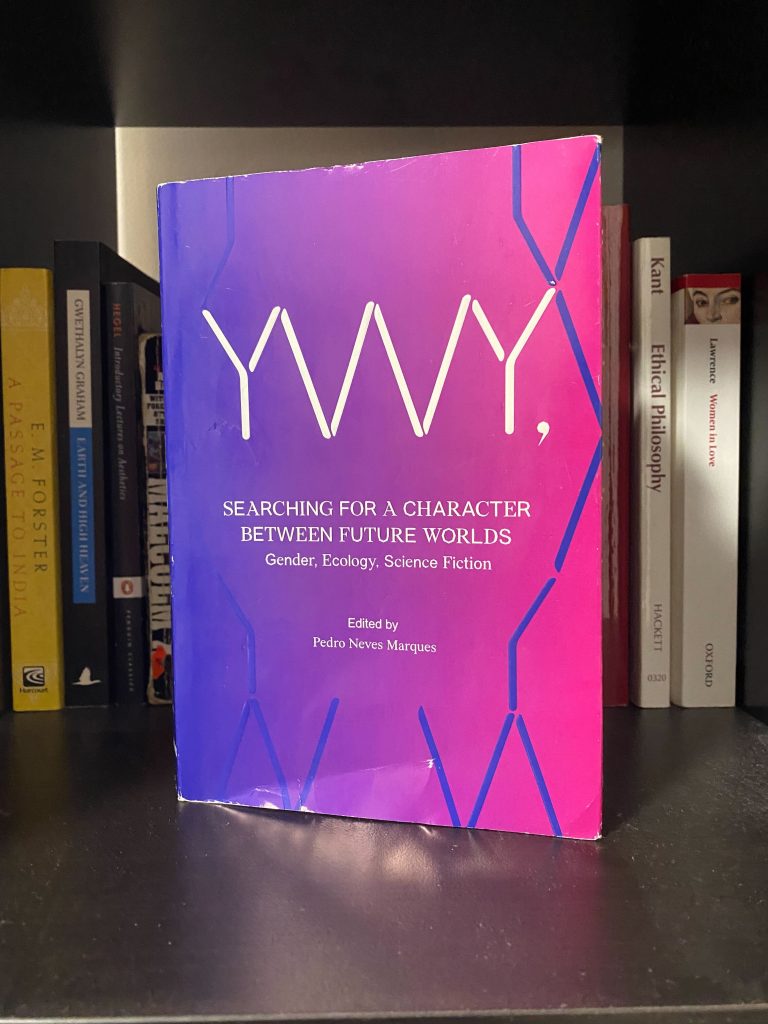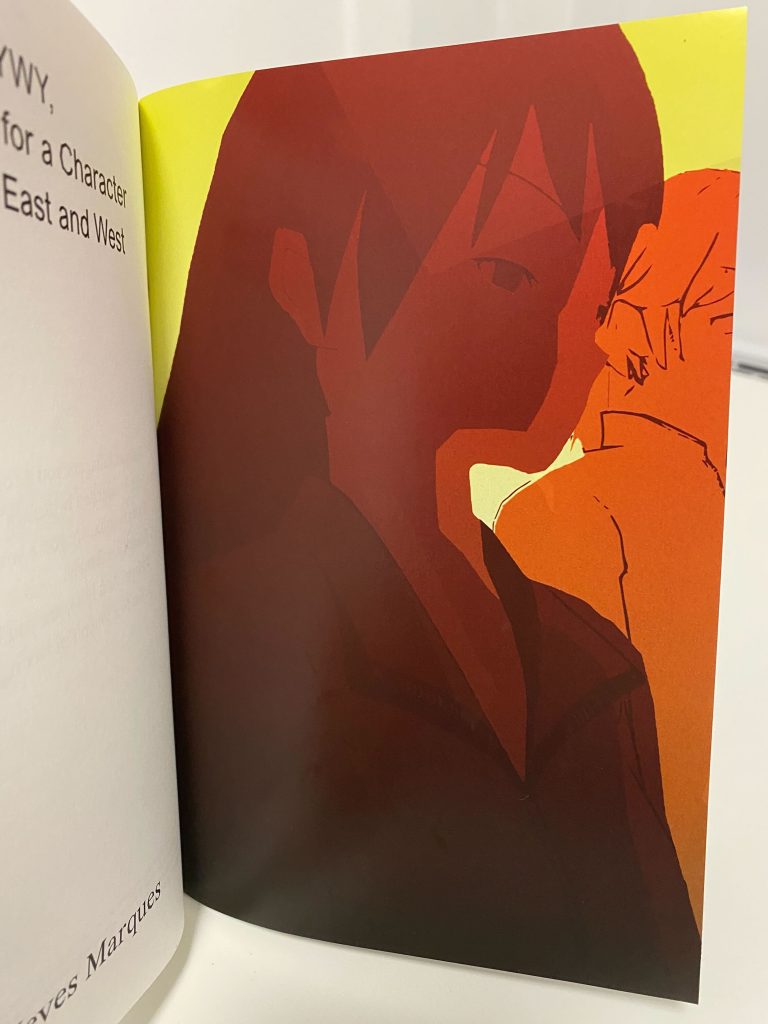Pedro Neves Marques’s YWY, Searching for a Character between Future Worlds: Gender, Ecology, and Science Fiction (referred to hereafter as YWY) is a modern book in many senses of the word. Certainly, it’s recently published (February 2022, Sternberg Press), but more importantly, it contains the voices of contemporary artists, academics, and authors who have much to say on the complexities in Indigenous Science Fiction. YWY is a collection of essays and interviews with Neves Marques and various others interested in science fiction and Indigenous Futurism, a genre that situates Indigenous stories and other media in the future, as opposed to a past that Indigenous peoples are often relegated to. The collection offers itself as both a companion to Neves Marques’s 2017 short film Semente Exterminadora (Exterminator Seed) and as an academic and creative fusion of thoughts on Indigenous science fiction. Unfortunately, YWY remains inaccessible in many ways.

YWY often feels deeply immersed in a world of its own, as it highlights some particularly dense artwork and ideas, discussing them with an overwhelming fluency. Although YWY provides many interesting perspectives on Indigenous science fiction and Indigenous Futurism, these remain difficult to grasp from an introductory perspective. Heavy on theory (human/technology dichotomies, “lo-fi sci-fi”, and Indigenous Futurisms, plural, etc.) and scanty in its explanations of Semente Exterminadora or any of the other pieces in the collection, the Indigenous android of the title remains as much of a mystery as when I first opened the pages of this book.
My criticism must be mediated by the fact that Neves Marques includes the script to Semente Exterminadora, in translation, within the collection. Unfortunately, even with the words before my eyes and screen captures from the film included, the messages behind this short film are difficult to discern. The synopsis tells us that two characters, Capivara and YWY, an Indigenous android, are searching for employment on monocultural plantations after the offshore oil rig they worked on exploded and contaminated the surrounding area. The film follows their journey to these plantations, culminating in YWY’s speaking to the transgenic corn (which is modified such that it cannot reproduce) surrounding them and Capivara unable to comprehend their connection.
The script, which Neves Marques notes does not reflect the film in its final, presented form, left me with more questions than answers. In the script notes, Neves Marques says that Semente Exterminadora is a “discreet form of science fiction,” which is a statement I found difficult to reconcile with YWY’s complicated relationship to the talking corn—an extremely complex character of its own. The script raises many of the issues that Neves Marques’s carefully-curated anthology also discusses, but as in his interview with Marisol de la Cadena, these companion pieces can, at times, be more inaccessible than the script itself. Neves Marques and de la Cadena’s discussion about onto-epistemic (a combination of ontology and epistemicism that addresses the gaps between meaning, language, and literal, actual versions of the things we refer to in language) meaning in Indigenous languages, for example, is terminology-dense and, given the interview format of the text, can be hard to follow. Even some of the artistic pieces, like Zahy Guajajara’s work “YWY’s ROOTS, A Timeless Tragedy,” are abstract to the point of distraction, with sentences like “The controlling human is motivated by curiosity, like a child, allowing its own deeds to control him, how funny!”

Still, regardless of my confusion, the text raises some interesting questions. One of my favourites is posed in the interview between Neves Marques and de la Cadena, with Neves Marques bringing up a previously posed question: “‘Is YWY able to listen to the voice of genetically modified corn because of her ancestral Amerindian animism or is it because she’s an android and the plants are also artificial?” Nearly all of the texts and interviews included attempt to address complex intersections of gender, indigeneity, ecology, and science fiction, although there’s also just some extra-cool sci-fi thrown in for good measure, like the full-page drawings included in Neves Marques’s piece “YWY, Searching for a Character Between East and West.”
I came to this text hoping to learn more about a subject area that I knew little about and that is not—as far as I know—widely covered in the media or by academic institutions. I left feeling like I had peeped into the window of something massive, complex, and fascinating, but not like I had been invited in. More to this point is the fact that watching Semente Exterminadora proved almost impossible—a Google search yielded no results, and the film is not readily available anywhere else. The companion, at least, can be bought in bookstores and online. Although the film’s inaccessibility speaks to the exclusivity of the content, it also indicates that for films like Semente Exterminadora to be watched and discussed and for scholarship in this field to be understood and widely appreciated, the avenues of availability need to be widened. Whether this is through more university courses centred on these topics or more mainstream media in this genre. Otherwise, Indigenous science fiction will remain worryingly niche. There is, of course, a good response to my criticisms: it is not Neves Marques’s responsibility, nor the responsibility of any of the writers and speakers in this collection, to illuminate and explain the theories and ideologies that lie behind Indigenous Science Fiction, Futurism, or other theoretical standpoints. Still, billed as a companion to the film YWY itself, the book supplies me with more questions than answers. Maybe that is its intention. In any case, the “search for a character between future worlds” is never quite complete.
